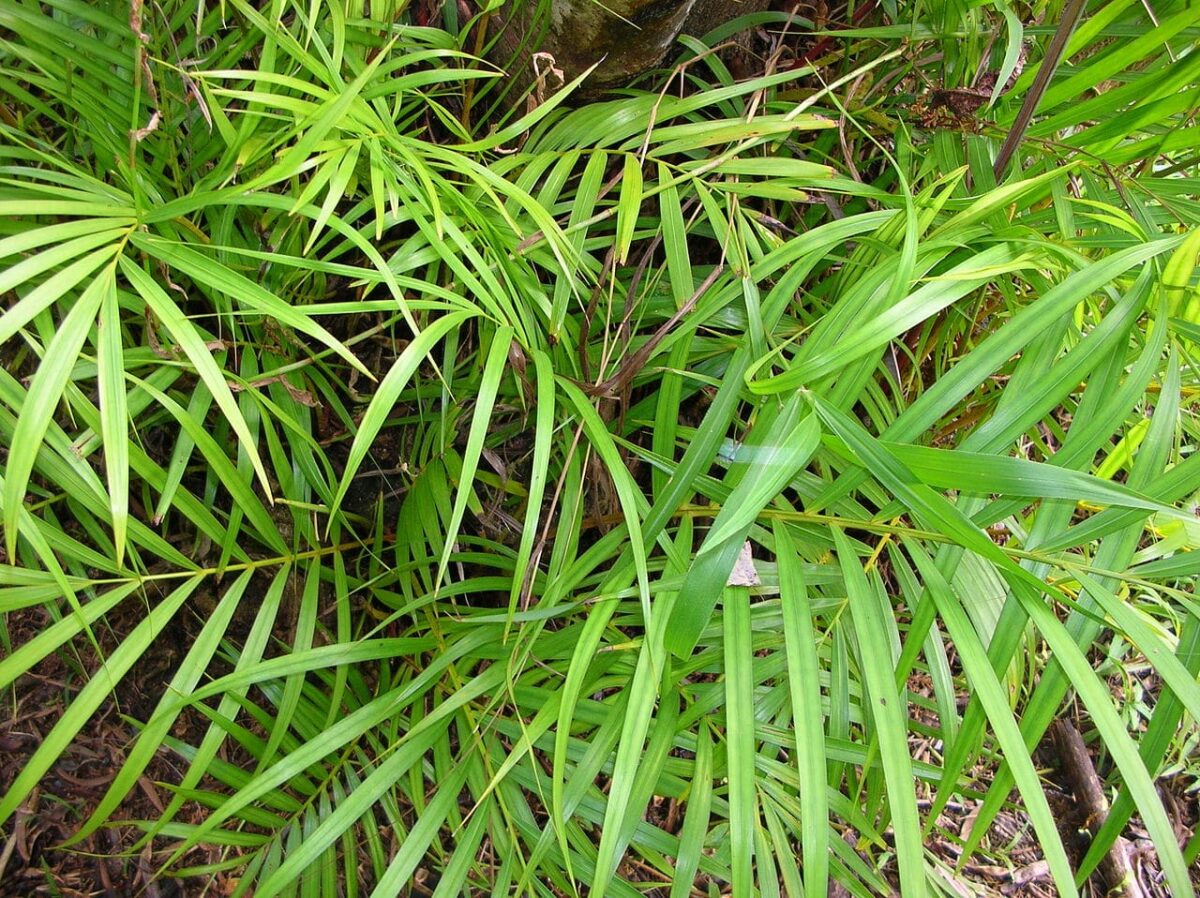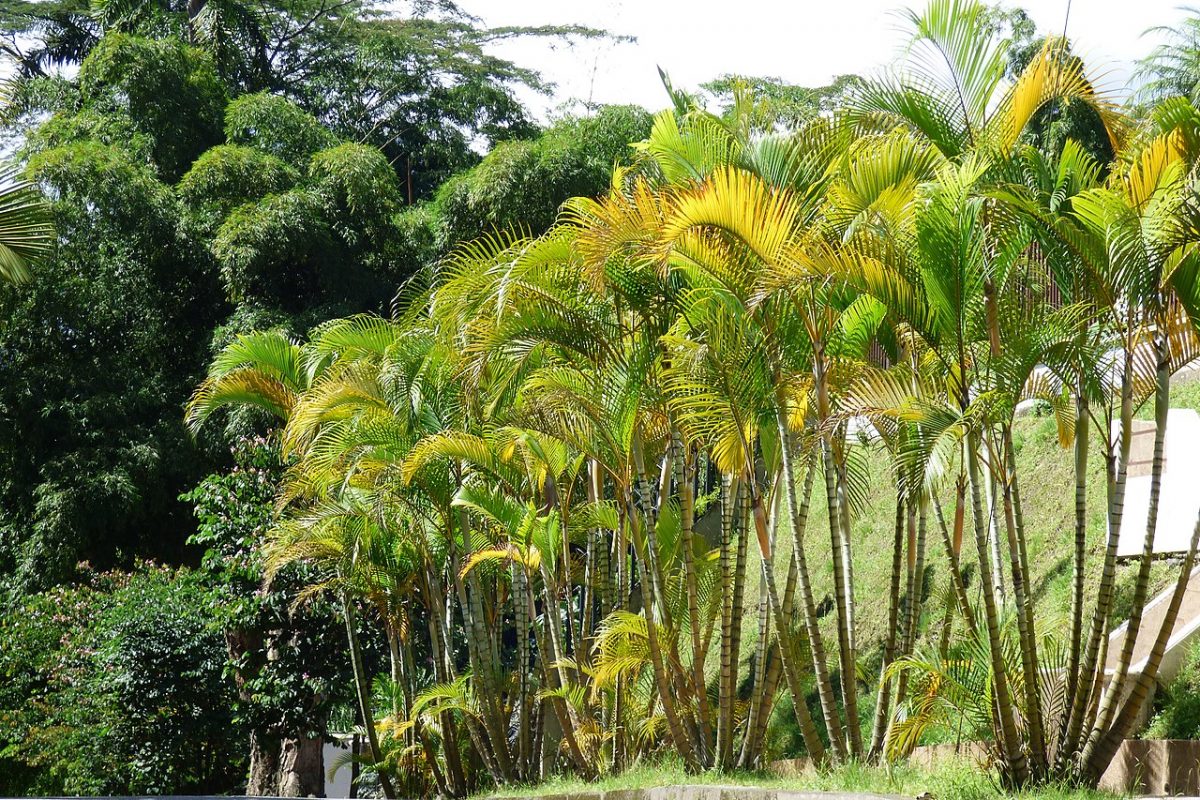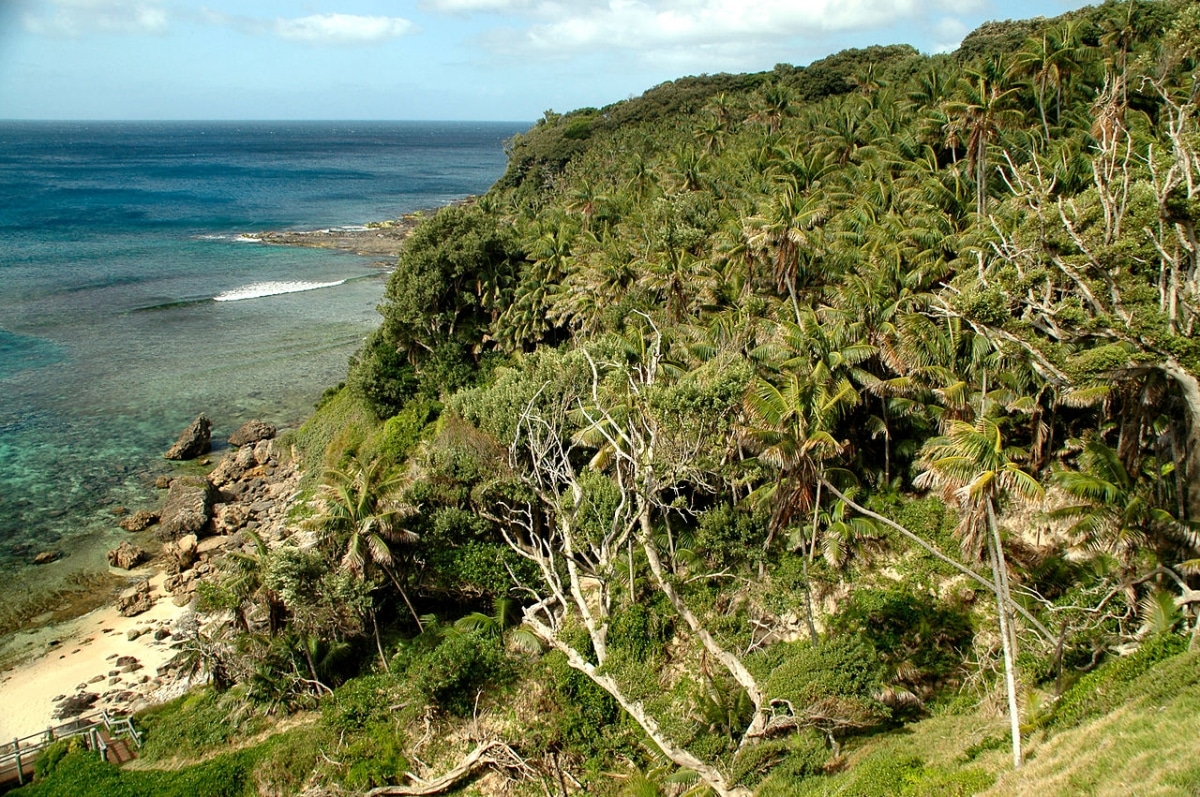
Image - Wikimedia / Forest & Kim Starr
The areca and the kentia are two of the best-selling palm trees, especially to have indoors. However, although to inexperienced eyes they may seem practically the same, the truth is that they are very different. They need similar care, but nothing more.
To make it easy for you to identify them, In this article I will explain how they differ, so you will know if you want an areca or a kentia to decorate your home or garden.
I love palm trees. In fact, I would say that, next to Japanese maples and sarracenias, they are my favorite plants. But although I enjoy getting to know exotic species, that is, those that can only be obtained in nurseries and specialized stores and more rarely in conventional nurseries, the most common ones such as the areca and Kentia I think they are very, very pretty plants. So much so that I did not hesitate to buy them to have at home, as you can see in the video.
However, despite being common plants, sometimes you find someone who confuses them. And it's normal, since when they are young they look quite alike. Therefore, I am going to tell you how to differentiate them, regardless of how old they are:
Physical characteristics
Let's talk about the physical characteristics first; not in vain, they are the ones we can see:
Leaves

Image - Wikimedia / Alejandro Bayer Tamayo from Armenia, Colombia
The leaves of the kentia are dark green, and they also have wider leaflets than those of the areca.. The latter has the most divided leaves, that is, they are composed of a greater number of leaflets; in fact, you can have up to 60 pairs.
Another important difference that may go unnoticed if you don't have anything to compare to is that when they are young, the leaves of the kentia are more arched than those of the areca. And although as the kentia grows it will continue to produce them like this, they tend to grow upwards. Areca leaves, on the other hand, do not have that tendency to grow horizontally.
Height and trunk/s
The kentia is a much taller palm than the areca: it can reach up to 15 meters if the weather and local conditions allow it. In addition, it develops a single stem that we mistakenly call a trunk, which is dark green when young, and ringed when mature. Its thickness will be about 20 centimeters, reaching 30cm at its base.
On the other hand, the areca is a plant that reaches a maximum height of 5 meters, but the most normal thing is that it does not exceed 3 meters. She develops several stems, even when she is young. These come out from the stems already formed, and are yellowish green with dark dots. When the plant matures, it will also have ringed stems, but they will remain thin, measuring about 15 centimeters at most.
flowers and seeds

Image - Wikimedia / Dinesh Valke
The kentia is a palm tree that takes a long time to flower, at least 10 years. When it does, it produces an inflorescence up to 1 meter long which sprouts under the last leaves. The flowers are very small, about 1 centimeter, and yellowish green. Once they are pollinated, they ripen fruits that are green at first and later dark red. These are 1 centimeter long and contain one seed.
Our other protagonist, the areca grows faster, so it flowers earlier: at about 5 years of age if conditions allow it. Its flowers are also grouped in yellow inflorescences that sprout under the last leaves; however, the fruits are green or yellowish-green at first, and bright red later.
Other Important Differences
We have talked about the physical characteristics, but the truth is that there are others that are also important to know, since they will be the ones that will help us understand why they are two different palm trees:
From

Image – Wikimedia/Black Diamond Images // Kentias in their natural habitat.
The kentia is a palm native to Lord Howe Island, which is an island in the Tasman Sea. Specifically, it is about 600km east of Australia. It is a slow-growing plant that can be found near the sea, so it lives in places where ambient humidity is very high. In addition, the average annual temperature is 19ºC, and the average rainfall is 8mm.
Instead, the areca is native to Madagascar, where it lives in a region where the climate is tropical rainy, with an average annual temperature of 20ºC.
Basic needs
So that they can be really well, it is important to know what care we must provide them. And this is where we will find more differences:
- kentia: This is a slow-growing palm that needs to be in a bright room, although it can tolerate low-light conditions. Also, if you live in an area where there are slight frosts, you can grow it outside, but yes: if the degree of insolation is very high, as it happens in the Mediterranean, you will have to put it in the shade since otherwise it would burn. Also, you have to water it 1 or 2 times a week, and spray its leaves with water daily if the environmental humidity is low.
- Areca: it is a palm that grows fast, but it is more delicate than the kentia. It can't stand the cold, and it needs a place with a lot of light (not direct) and high ambient humidity. It is sensitive to excess water, although it needs to be watered a little more than the kentia, especially during the summer.
Where to buy?
If you wish, you can get them by clicking here:
Areca

kentia
